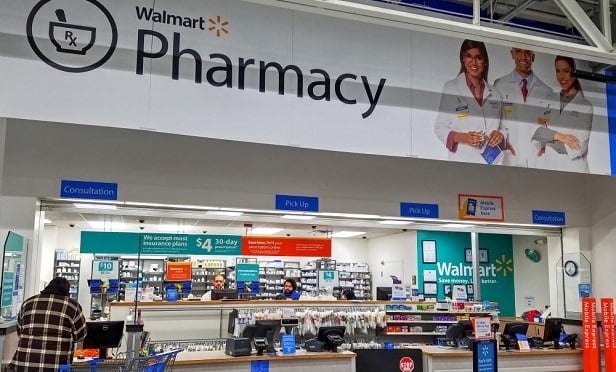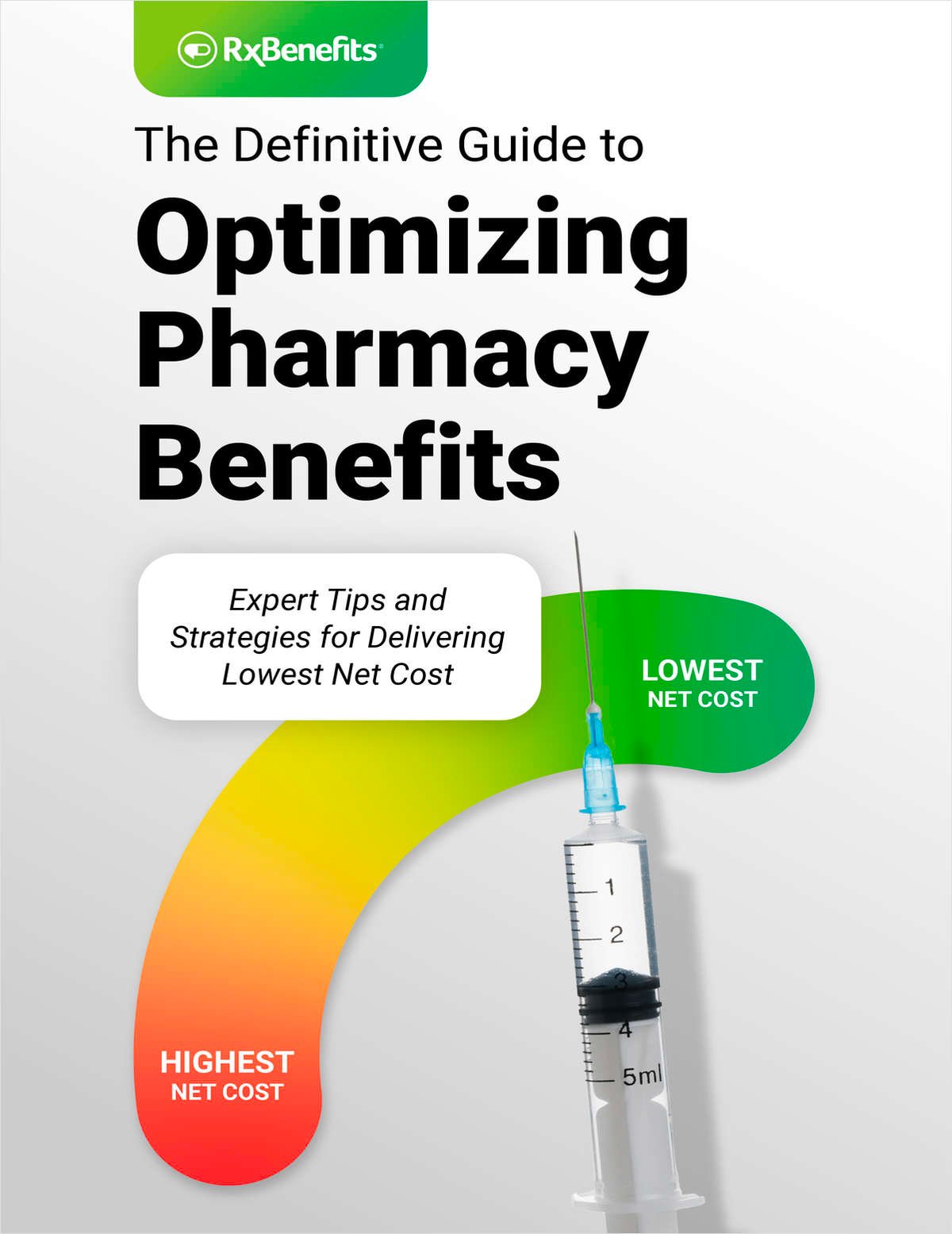Prescription drug spending continues to be one of the most pressing concerns for employers when it comes to health care costs. And while drug costs, especially for specialty pharmacy drugs, are expected to continue to rise, there are strategies that may help businesses keep those increases to a manageable level, especially if they can develop partnerships with brokers and pharmacy benefit managers.
|Drugs drive health care spending
There is widespread agreement that drug costs are not rising as sharply as they have in the past—but the trends are still not good for employers. Specialty pharmacy has become the focus, as both costs and demand continue to grow.
“The specialty pharmacy trend is a significant concern and it is not abating,” says Ellen Kelsay, chief strategy officer for the National Business Group on Health. “When you look at the drugs in the pipeline, there's no indication that trend will moderate in the future.”
A recent survey by Mercer found that up to 50 new specialty drugs are expected to hit the market annually for the next five years, which could increase costs for employers by $25 billion annually. A story by Reuters on the Mercer survey noted that one new specialty drug treatment for leukemia costs $475,000 per patient.
“What we're seeing right now is that approximately 1 percent of a payer's claim volume is specialty drugs, but it comprises approximately 40 percent of their spend,” said Kelly Chillingworth, senior pharmacy consultant with Lockton Benefits Group. “It's really scary for employers, especially if they have a family with a sick kid, or somebody with cancer therapy, or if a new drug comes out that costs $1 million a year. They're nervous.”
|Cost control strategies
Employers are addressing these cost concerns with a variety of strategies. Closed formularies, tiered payment plans, step therapy and direct negotiation with drug manufacturers are some of the ways that employers are trying to hold down costs.
But these strategies have some downsides. Limiting choices through a formulary is not popular with patients or physicians. Tiered plans shift more cost to consumers. Step therapy—where a patient tries a less-expensive therapy first—can be complicated and time-consuming, not to mention frustrating for patients whose symptoms are not being addressed.
“One thing that brokers and employers are wrestling with is how much to rein in choices. People don't want to be forced to change when it comes to prescription drugs—that's one of the areas of tension,” says David Evans, an agent at Mass Mutual Financial Group and senior vice president of Independent Insurance Agents and Brokers of America. He says his company works with employers and their workers to find the best balance for all parties. “You try to arrive at a good balance of cost and coverage. You try not to be disruptive.”
Evans adds that communication with employees is key—companies must explain why they are pursuing a specific strategy and what it will mean for enrollees. “If people are going to cost-share more, you can communicate and help them be proactive, to talk to their doctors about their options.”
|PBMs can help—but choose carefully
Especially for self-funded health plans, a good pharmacy benefit manager (PBM) can be an important part of controlling drug costs. Benefits experts say finding a good fit is critical—and brokers can play an important role. “Depending on a PBM's size, what they can leverage, and what partnerships they have will determine the quality of the discounts on the drug side,” Chillingworth says. “Sometimes, people think PBMs are bad, but they're really not; it just depends on who you're working with and how transparent they are. We try to partner our clients with the best fit for them.”
“I've had good experiences and I've had experiences where I question the motivation [of PBMs],” says Kevin Davis, senior benefits consultant at Univest. “It's key to have data and dialogue with all parties involved. If you have good data and full transparency, it can be a good experience.”
|New challenges, new tools
Chillingworth, who advises companies on how to control their spending on drugs, notes that one way to reduce costs on specialty drugs is to think outside the box a bit. “We really have to get creative with pharmacy these days,” she says. “Sometimes it makes sense to pay for a drug on the medical side, sometimes it makes sense to pay for it on the pharmacy side.” She adds that the location where the drug is administered (a clinic versus a hospital setting) or purchased can also affect what discount is applied. And even a small discount can help. “Even a 1 percent discount on a thousand dollar drug can make a big difference,” she notes.
Transparency tools, which have been improving in recent years, are another way to hold down costs on the consumer level, experts say. GoodRx, BlinkHealth and Milligram are some of the online tools available to consumers. These tools can tell consumers what pharmacies in their area are charging for a specific drug, allowing consumers to shop for the best price. This is especially helpful for patients on high deductible health plans. However, consumers should remember to save receipts and submit them to the plan to make sure it counts against their deductible.
Kelsay notes that there are also transparency tools that allow physicians and patients to look at drug costs at the time of the office visit. “If the physician writing the script can see what the cost of the drug is, what the patient's share is, and at what cost point the pharmacies will dispense the drug, the physician and patient can have that conversation in tandem, rather than having that discussion separately,” she says.
Changes in the market
The recent announcement of a merger between CVS pharmacies and Aetna may be a sign of things to come. The $69 billion deal would combine one of the nation's largest retail pharmacy chains with one of its largest health insurers. Debate continues on whether such mergers will make health care delivery more efficient or simply limit choices as competition declines.
Much discussion has also taken place around terms such as value-based purchasing and supply-chain management. Kelsay notes that companies may invest more upfront in therapies if the value—the effectiveness of the therapy—is also high. “Some employers say, 'I will happily pay more for a drug if know what the value equation is,'” she says.
Kelsay adds that the supply chain of prescription drugs is something that may need to be reformed. “An emerging theme we're hearing is that the supply chain is performing sub-optimally,” she says. “Employers are part of that, but PBMs and other stakeholders are also expressing displeasure. I think it's ripe for reexamination and change.”
|Getting the public's attention
Some experts say the concept of direct-to-consumer marketing also needs to be reexamined. Davis notes that the U.S. is one of only two countries that allows direct-to-consumer advertising of prescription drugs. “The drugs I see advertised are some of the most costly drugs around,” he says.
“There's quite a bit of money invested in advertising by manufacturers,” says Kelsay. “The employer view is that this might be contributing to higher costs. It certainly brings greater awareness of what drugs are out there, but it's also contributing to the pricing of those drugs.”
And as with many public issues, this one has a political side. High-profile hearings about EpiPen costs and other big-ticket drugs have some wondering if Congress would weigh in, or even President Trump, who has criticized drug manufacturers in the past. But experts caution against expecting any quick action out of Washington.
“Trump has on occasion produced some rhetoric against drug companies,” Evans says. “But this administration tends not to go in a straight line. I don't see a major change coming in the next 12 months in terms of government regulation.”
Continue Reading for Free
Register and gain access to:
- Breaking benefits news and analysis, on-site and via our newsletters and custom alerts
- Educational webcasts, white papers, and ebooks from industry thought leaders
- Critical converage of the property casualty insurance and financial advisory markets on our other ALM sites, PropertyCasualty360 and ThinkAdvisor
Already have an account? Sign In Now
© 2024 ALM Global, LLC, All Rights Reserved. Request academic re-use from www.copyright.com. All other uses, submit a request to [email protected]. For more information visit Asset & Logo Licensing.









